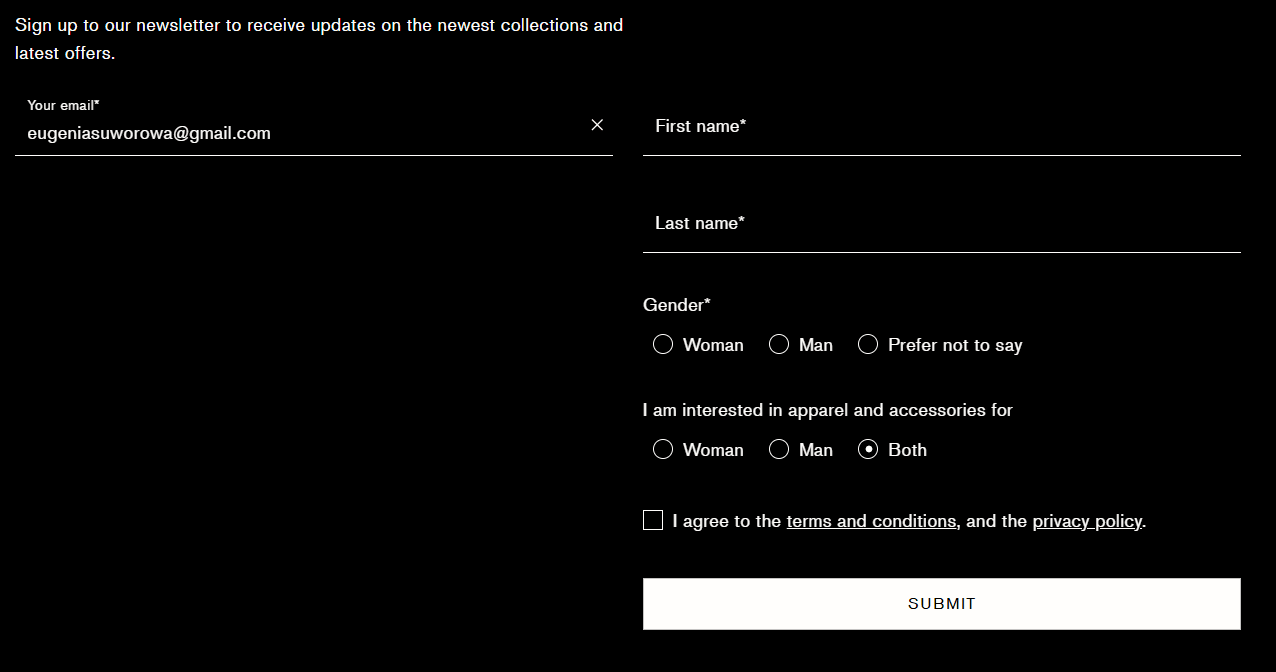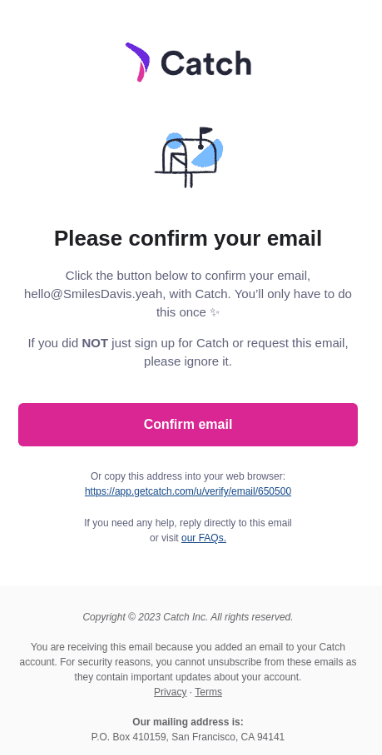How to Properly Obtain Consent for Email Marketing in 2025
Email marketing remains one of the most effective tools in a marketer’s toolkit. But with growing scrutiny around data privacy and enforcement of global regulations — including the U.S. CAN-SPAM Act, California’s CPRA, the EU’s GDPR, and Canada’s CASL — the risks of non-compliance are higher than ever.
In this article, we’ll explain how to properly collect email addresses and obtain valid consent, what legal requirements marketers need to be aware of in 2025, and how to build compliant email campaigns that keep both your subscribers and regulators satisfied.
What Laws Must You Follow to Avoid Fines
To legally send marketing emails, you must follow both U.S. laws and, if you have an international audience, also comply with regulations in other countries.
United States (CAN-SPAM Act)
In the U.S., prior consent (opt-in) is not legally required. The CAN-SPAM Act allows commercial emails as long as they meet the following requirements:
- Accurate sender identification;
- Clear indication if the message is promotional;
- A valid physical mailing address;
- A clear and working unsubscribe link;
- Prompt processing of opt-out requests.
California (CPRA)
The California Privacy Rights Act treats email addresses as personal information. It does not require opt-in consent for email marketing, but it does require businesses to disclose how data will be used and to allow users to opt out of data sharing.
European Union (GDPR and PECR)
In the EU, email marketing is tightly regulated under the General Data Protection Regulation (GDPR) and the Privacy and Electronic Communications Regulations (PECR). These laws require prior, explicit, and verifiable opt-in consent. Pre-checked boxes are not valid. Businesses must log consent details and provide a simple way to withdraw consent. Fines can reach €20 million or 4% of annual global revenue.

Canada (CASL)
Canada’s Anti-Spam Law requires express consent for most marketing emails. Organizations must clearly state the purpose of the message, identify themselves, include an unsubscribe link, and retain proof of consent. Penalties can be up to 10 million Canadian dollars per violation.
What Counts as a Violation When Collecting Email Addresses
A violation occurs when email addresses are collected or used without clear, informed, and verifiable consent. Many international laws require explicit consent, and failure to comply may lead to serious penalties. Common violations include:
1. Sending emails without consent. This includes messages sent to contacts from purchased lists, scraped websites, or any database where recipients did not knowingly opt in. Under GDPR, CASL, and PECR, this is considered unlawful. Even in the U.S., where opt-in is not required, you must provide an opt-out and identify yourself clearly. Failure to do so may result in complaints and enforcement actions.

2. Using pre-checked or unclear consent boxes. Consent must be active, informed, and freely given. Under laws like the GDPR and CASL, pre-ticked boxes, vague phrases like "I agree to receive updates" (without further context), or hidden consent mechanisms do not meet legal standards. These practices are easy to challenge and may render parts of your email list non-compliant.
3. Collecting email addresses indirectly without notice. If you obtain someone's email through a third party or public source, laws in Europe and some U.S. states (like California's CPRA) may require you to notify the person before contacting them. You must explain where their address came from, why you are emailing them, and how they can opt out.
4. Buying or trading email lists. This is one of the most high-risk practices. Under GDPR, CASL, and many privacy laws, you cannot use third-party lists unless you can prove that each recipient gave informed, specific consent to receive messages from your organization. Even if the seller claims the users agreed, the responsibility to verify consent falls on you.
What Penalties You Can Face for Violations
Violating email marketing and data privacy regulations can lead to serious financial and legal consequences, depending on the region. Below are the most relevant laws and typical enforcement practices in the United States, the European Union, and Canada.
Penalties under the CAN-SPAM Act (United States)
The CAN-SPAM Act does not require prior consent to send marketing emails, but it does establish specific compliance requirements. These include accurate sender identification, a clear way to opt out, a valid physical address, and timely processing of unsubscribe requests.
Each violation can result in civil penalties of up to $51,744, as determined by the Federal Trade Commission (FTC). In practice, fines are assessed based on the nature, scope, and duration of non-compliance. Repeated or willful violations may trigger additional enforcement actions, such as court orders or mandatory compliance audits. Company executives may also be held personally liable in severe or intentional cases.
Penalties under U.S. State Privacy Laws (California, Colorado, Virginia)
State-level laws, particularly the California Privacy Rights Act (CPRA), impose additional obligations regarding how personal information—such as email addresses—is collected, stored, and used. These laws focus on transparency, data minimization, and consumer rights.
Penalties can reach up to $2,500 per violation, or $7,500 per intentional violation. Each affected individual is counted separately, meaning a single non-compliant campaign could lead to cumulative fines if sent to many users within a covered jurisdiction.
Enforcement by the Federal Trade Commission (FTC)
Aside from the CAN-SPAM Act, the FTC can also act under general consumer protection laws. It may pursue enforcement in cases of deceptive or unfair practices, including misleading subscription flows, hidden data sharing, or failure to honor user preferences. FTC actions can result in monetary penalties, mandatory corrective actions, and ongoing regulatory oversight.
Penalties under the GDPR (European Union)
The General Data Protection Regulation (GDPR) applies to any organization that processes personal data of EU residents, regardless of where the business is located. GDPR requires prior, explicit, and informed consent for sending marketing emails.
Violations of GDPR can result in administrative fines of up to €20 million or 4% of the company’s global annual revenue, whichever is higher. Enforcement is managed by national data protection authorities and often includes investigations, warnings, and formal corrective measures.
Penalties under CASL (Canada)
Canada’s Anti-Spam Law (CASL) requires express consent for most forms of commercial electronic communication. Businesses must clearly identify themselves, explain the purpose of the message, provide an unsubscribe mechanism, and retain evidence of consent.
Fines under CASL can reach up to CA$1 million for individuals and CA$10 million for businesses per violation. CASL also includes provisions for private rights of action, although they are currently suspended.
Practical Tips for Email Marketers
- Use explicit opt-in. In the EU and Canada, consent must be explicit and freely given. Use unchecked boxes or clear affirmative actions. In the U.S., opt-in is not mandatory under CAN-SPAM, but still recommended to reduce spam complaints and meet international expectations.

Separate different types of consent. Do not bundle consent for marketing emails with acceptance of privacy policies or terms of service. For GDPR compliance, each purpose must have its own separate and specific consent.
Implement double opt-in. Send a confirmation email after signup to verify intent. This reduces accidental subscriptions and gives you strong proof of consent, which is required in some jurisdictions (e.g., Germany under GDPR) and helpful under CASL.

Keep detailed consent records. Store the time, date, IP address, and method of consent. Under GDPR and CASL, the sender bears the responsibility to prove that valid consent was obtained.
Make unsubscribing easy. All marketing emails must contain a visible and functional unsubscribe mechanism. You must process opt-out requests without delay. This is a legal requirement under CAN-SPAM, GDPR, PECR, and CASL.
Clean your mailing list regularly. Remove inactive addresses, bounced emails, and users who haven't interacted over time. This improves deliverability and minimizes complaints.
Do not buy or rent email lists. Under GDPR and CASL, using third-party contact lists without direct, documented consent is illegal. Even in the U.S., this practice increases the risk of spam reports and reputational damage.
Secure personal data. Use encrypted storage and restrict access to subscriber data. GDPR, CPRA, and other laws require you to take appropriate technical and organizational measures to protect personal information.
Stay informed about legal updates. Privacy laws evolve. Monitor developments in regulations like CPRA, GDPR, CASL, and others. Adjust your forms, workflows, and internal policies as needed to remain compliant.
Conclusion
As of 2025, email marketing continues to operate under well-established data privacy laws like the GDPR, CASL, and the CAN-SPAM Act. While the core regulations haven't changed significantly, the expectations for transparency, proper consent, and user control remain high. It's essential to manage how you collect and store consent, design clear and compliant signup forms, and provide users with an easy way to unsubscribe.
By following these best practices, you can run effective email campaigns, reduce legal risk, and build trust with your audience.
